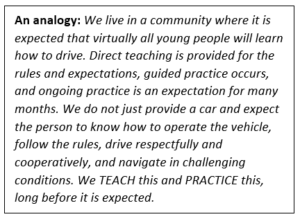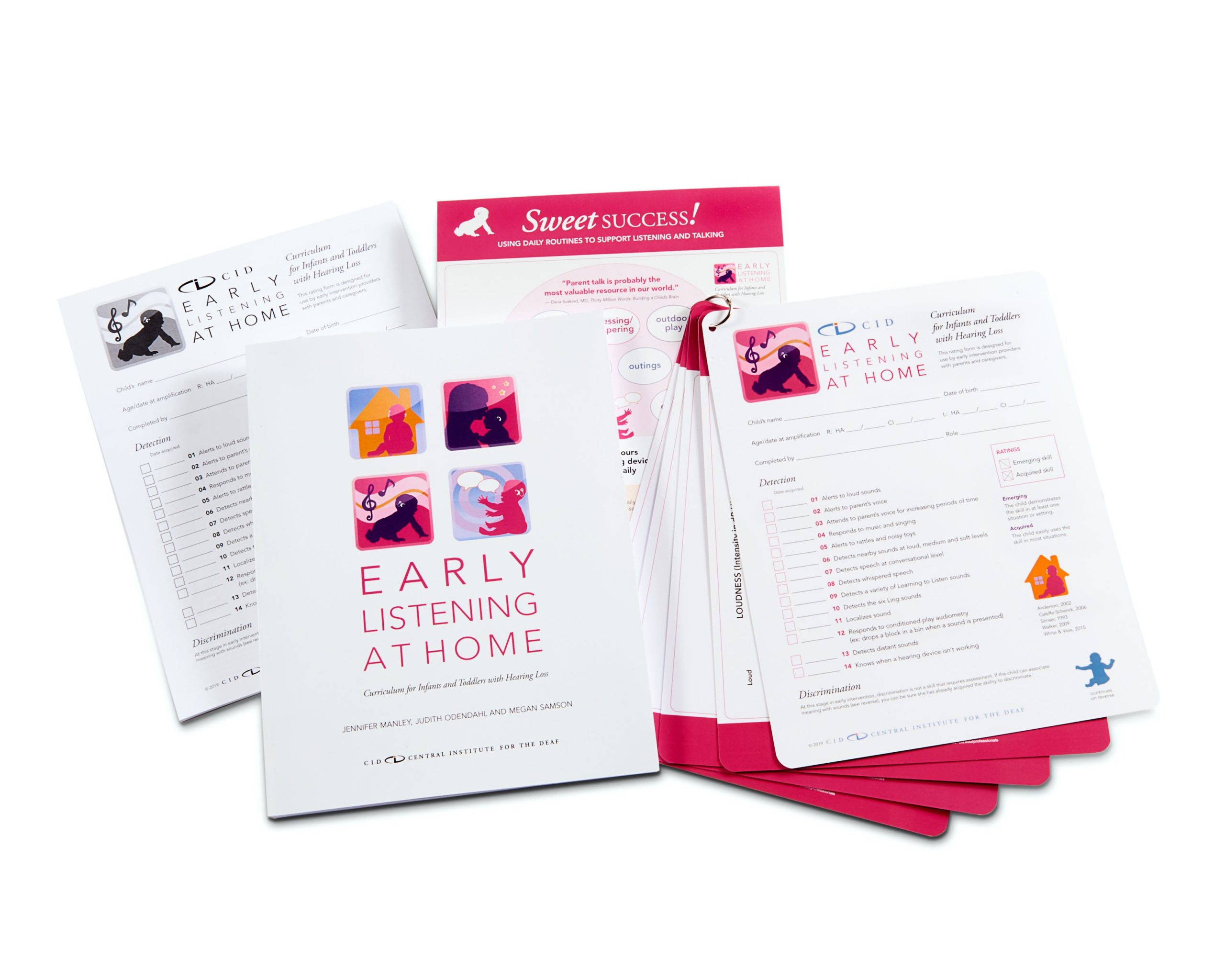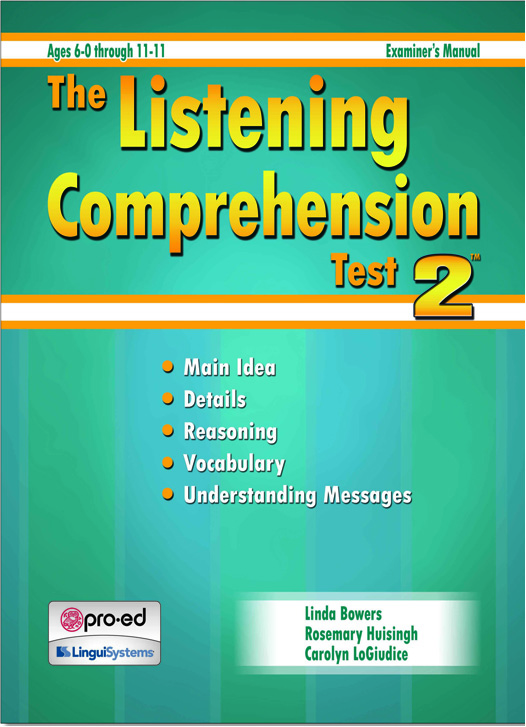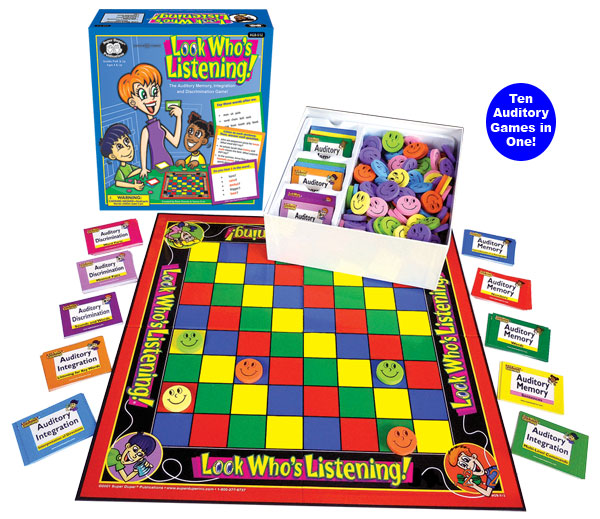Related Products
For Professionals
- Amplification
- Assessment of Student Skills, Challenges, Needs
- Early Childhood: Infants, Toddlers, Preschool
- Hearing Loss – Identification, Impact and Next Steps
- IDEA Law Summary Information
- Language and Speech Development Issues
- Legal Issues in Serving Children with Hearing Loss
- Listening (Auditory Skills) Development
- Planning to Meet Student Needs
- Self-Advocacy Skills for Students with Hearing Loss
- Self-Concept: How the Child with Hearing Loss Sees Himself
- Social Skills
- Speech Perception & Learning
Related Teacher Tools Takeout Items
Auditory / Sign Language Skill Development
 Providing communication access to students often includes auxiliary aids and services, like hearing aids, FM/DM hearing assistance technology, and/or sign language interpreters. Yet we cannot assume that students are using these accommodations as well as they need to if they are to access information optimally.
Providing communication access to students often includes auxiliary aids and services, like hearing aids, FM/DM hearing assistance technology, and/or sign language interpreters. Yet we cannot assume that students are using these accommodations as well as they need to if they are to access information optimally.
Although students who are hard of hearing now receive hearing aids at much younger ages than they did in decades past, they still will not learn all of the auditory skills hierarchy (by age 4 as their hearing peers do) – unless direct teaching occurs.
A student may have been raised with ASL as his primary language, or he may be in a ‘learn as you go’ situation with this communication modality added later in early childhood. Understanding what the interpreter is signing is a prerequisite for this accommodation to truly provide communication access.
Just because we provide hearing devices and/or an interpreter, does not mean the student can use this input effectively.
This fact may come as an ‘aha’ to administrators and educators who ‘see that the child can hear’ or ‘see that the child watches the interpreter.’ Optimizing how well the student is able to benefit from the communication that they perceive only makes sense if we are to truly ‘level the playing field’ and provide an appropriate education to students who are deaf or hard of hearing.
The PARC: Placement and Readiness Checklists for Students who are Deaf and Hard of Hearing include a General Inclusion Checklist and an Instructional Communication Access Checklist that are useful in identifying the level of access and readiness of students, regardless of their communication modalities. There are specific Placement and Readiness Checklists for Preschool/Kindergarten, Elementary, and Secondary grade students. Finally, there is the Interpreted/ Transliterated Education Readiness Checklist that iterates many factors that go into a student being able to fully benefit from a sign language interpreter or cued speech transliterator.
Development of Auditory Skills
 It is true that the earlier a child begins consistently using amplification devices, the more naturally he or she will develop auditory skills. The terrific advantage of early identification of hearing loss, early amplification, and early intervention to develop communication skills still cannot be assumed to develop all of the listening skills on the auditory hierarchy in time for school. The handout Listening Skills Develop Early provides listening skill expectations from birth to age 4. The ALL – Activities for Listening and Learning is a performance checklist for development of complex listening skills. Even those of us who have worked with students who are hard of hearing for many years may still be surprised at just how much auditory skill development occurs, without effort, by children with typical hearing.
It is true that the earlier a child begins consistently using amplification devices, the more naturally he or she will develop auditory skills. The terrific advantage of early identification of hearing loss, early amplification, and early intervention to develop communication skills still cannot be assumed to develop all of the listening skills on the auditory hierarchy in time for school. The handout Listening Skills Develop Early provides listening skill expectations from birth to age 4. The ALL – Activities for Listening and Learning is a performance checklist for development of complex listening skills. Even those of us who have worked with students who are hard of hearing for many years may still be surprised at just how much auditory skill development occurs, without effort, by children with typical hearing.
A child with hearing loss may use hearing devices that provide the potential for to perceive enough of the speech that surrounds him to learn language. In order to meaningfully interpret what is heard, he or she must specifically learn the necessary precursor auditory skills. Poor listening skills can cause maladaptive strategies to develop (per David Sindrey) such as:
- watching what others do instead of listening to directions
- looking for eye gaze/gestures from the speaker instead of trying to process their words
- guessing at meaning from context rather than listening to the whole sentence
- choosing to isolate themselves from others during play opportunities
- becoming dependent on a few people who act as ‘human hearing aids’
- faking comprehension
- monopolizing conversations
It is important to gather data on the presence and frequency of these maladaptive strategies through observation by individuals trained to recognize them or through comments in interviews of parents and school staff. These observations, along with formal assessment data, should provide a road map for auditory intervention.
Assessment is Necessary
 Just as you would not develop reading skills without first knowing the child’s abilities, we must assess the student’s abilities to determine where they have developed along the auditory hierarchy.
Just as you would not develop reading skills without first knowing the child’s abilities, we must assess the student’s abilities to determine where they have developed along the auditory hierarchy.
The SPICE – Speech Perception Instructional Curriculum & Evaluation remains the best means to assess auditory development. The SPICE for LIFE curriculum is excellent for developing the more complex auditory skills that our more language-appropriate students may still need to master. The Early Speech Perception test is excellent for basic evaluation of speech perception for young children or those new to consistent listening. Central Institute for the Deaf, developer of these materials, has FREE WEBINARS on how to assess and develop auditory skills. There is a charge if you desire CEUs.
- SPICE Overview and Detection
- Suprasegmental Perception
- Vowel and Consonant Perception
- Connected Speech
- Auditory Memory (SPICE for Life)
Development of Sign Language Skills
 To people who do not sign, even a student with spotty or low sign language development appears very skilled. A strong foundation in one language is needed to meet the communication and comprehension needs in school. If a student has not been raised in families where American Sign Language (ASL) is fluently used, it is very unlikely that the child has learned to become fluent in ASL by school age.
To people who do not sign, even a student with spotty or low sign language development appears very skilled. A strong foundation in one language is needed to meet the communication and comprehension needs in school. If a student has not been raised in families where American Sign Language (ASL) is fluently used, it is very unlikely that the child has learned to become fluent in ASL by school age.
Too often when students are ‘one and onlies’ it is assumed that the interpreter will ‘fill in’ all of the student’s communication needs. Keeping pace with the surrounding communication and delivering it at an appropriate language level is part of the role of the educational interpreter. Assessing a student’s level of sign language knowledge and systematically teaching to fill in gaps in language knowledge is the role of the teacher of the deaf/hard of hearing.
Assessment is Necessary
The White Paper: Estimating the Level of Communication Effectiveness/Access includes recommendations for how to assess the level of student knowledge of ASL. Refer to this resource for more information about determining the of communication effectiveness for students who use sign language, including the:
- Student Language and Communication Profile Summary
- Standardized Visual Communication Sign Language Checklist
- American Sign Language Receptive Skills Test
Knowing where the student is on the hierarchy of sign language development will provide specific areas of need to address through direct intervention.



